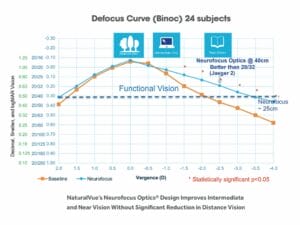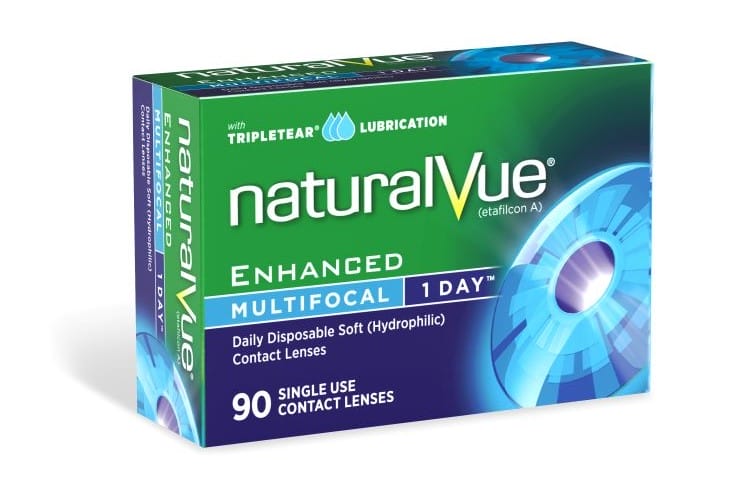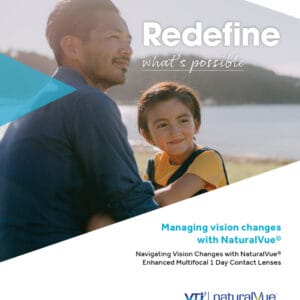January 19, 2024
LAS VEGAS — Visioneering Technologies, Inc. has reported the results of its Defocus Curve study with mature presbyopes, a prospective, non-dispensing, single-masked (subject) study conducted at four clinical sites. The study evaluated the optical characteristics and visual performance of the NaturalVue (etafilcon A) Enhanced Multifocal 1 Day extended depth of focus (EDOF) optical profile on mature presbyopes’ functional vision.
Mature presbyopes (age 50+; add requirement of > +2.00) were recruited to minimize the impact of residual accommodation and better quantify the performance of this EDOF lens design. The average age was 59.2 with patients ranging from ages 51 to 68. Respective average add was +2.24, ranging from +2.00 to +2.50, and prescriptions ranging from +2.75 D to -9.50 D. No adverse events were reported.
The results were announced in a presentation at GSLS entitled, “Is it Possible for One ADD to Provide Good Vision to Presbyopes of Any Age? The Defocus Curve Says YES!” It was delivered by Executive Director, Medical Affairs for VTI, Dr. Douglas P. Benoit, OD, FAAO.
The presentation shared study results generated defocus that evaluated vision with the NaturalVue Multifocal in mature presbyopes whose visual demands can be challenging to meet. This data showed that the NaturalVue lens provided a full range of functional vision, providing better than 20/40 (medicine bottle print size) binocular vision through up to 3.00 D optical vergence demand (33 cm/13 inches).

This clinical data demonstrates that the NaturalVue Enhanced Multifocal contact lens design preserved distance vision and effectively extended the functional vision range from distance to as close as 13 inches for mature presbyopes (≥+2.00 D add requirements) under a wide range of pupil sizes. The strong visual acuities observed indicate patients experienced minimal degradation across a wide visual range, suggesting the universal add enables rapid adaptation and represents a solution for presbyopes of all ages. Based on these results, eye care practitioners can provide a solution to presbyopic patients who want to continue contact lens wear without sacrificing clarity or functional visual range even as their visual needs increase with age.





